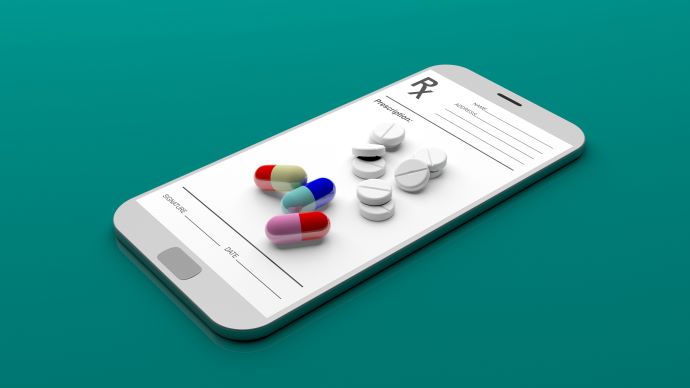Telehealth Supports OUD Treatment Retention Among Medicaid Enrollees
Medicaid patients who started opioid use disorder treatment via telehealth have better odds of continuing treatment than their peers who did not use telehealth.

Source: Getty Images
- Using telehealth to begin opioid use disorder (OUD) treatment is linked to high retention in treatment among Medicaid beneficiaries, according to a new study.
Published in JAMA Network Open, the study is a part of the HEALing Communities Study, an addiction prevention and treatment implementation study supported by the National Institute on Drug Abuse (NIDA) and conducted in partnership with the Substance Abuse and Mental Health Services Administration (SAMHSA).
The study examines the link between the modality used to provide buprenorphine treatment for OUD during the COVID-19 public health emergency (PHE) and treatment retention. It also investigates the link between OUD treatment modality and opioid-related non-fatal overdose after treatment initiation. Buprenorphine treatment initiation was defined as starting the medication after more than a 60-day gap in buprenorphine treatment.
Researchers used Medicaid claims and enrollment data from November 1, 2019, to December 31, 2020, for adults aged 18 to 64 in Kentucky and Ohio.
A total of 41,266 individuals in Kentucky and 50,648 in Ohio had a buprenorphine prescription in 2020. Of these, 18,250 in Kentucky and 24,741 in Ohio initiated buprenorphine treatment.
The proportion of people who started buprenorphine treatment through telehealth rose in both states following March 15, 2020. From the first quarter to the second quarter of 2020, telehealth treatment initiation increased from 2.4 percent to 16.3 percent in Kentucky and from 1.3 percent to 15.2 percent in Ohio. But Black people had lower adjusted odds of telemedicine initiation compared with White individuals.
Initiating buprenorphine treatment through telehealth was associated with better odds of 90-day retention in treatment in both states compared with not starting treatment through telehealth. Among the individuals who initiated buprenorphine via telehealth in the second or third quarter of 2020, the proportion that continued treatment for at least 90 days was 45 percent in Kentucky and 28.5 percent in Ohio.
The odds of continuing treatment were significantly associated with various factors, including race and sex. For instance, the adjusted odds of retention were lower for Black individuals than White individuals and for men versus women.
Further, starting buprenorphine treatment via telehealth was not associated with an increased likelihood of opioid-related non-fatal overdose. Among individuals who initiated buprenorphine in Q2 or Q3 of 2020 through telehealth, the prevalence of non-fatal overdose within 90 days was 1.8 percent in Kentucky and 3.6 percent in Ohio.
“Our study suggests that people who have access to telehealth treatment for addiction seem to do better than those who do not. Our hope is that these findings can help inform future policy,” said Lindsey Hammerslag, PhD, study lead author and assistant professor at the University of Kentucky, in a press release. “In addition, the findings also emphasize that the benefits of telehealth are not reaching all populations equitably. As we continue to integrate telehealth into standard care, we must also investigate and address the barriers that are preventing people from accessing this helpful and effective form of treatment for opioid use disorder.”
The study aligns with prior research that also shows telehealth supported high retention rates in OUD treatment programs.
Published in April, the study included 1,378 patients who received telehealth-enabled OUD treatment between April 2021 and September 2022. The researchers assessed 180-day and 365-day retention rates among patients.
They found that among the study population, the 180-day retention rate was 56.4 percent, and the 365-day retention rate was 48.3 percent. They also found that the retention rates for telehealth-based treatment for OUD were consistent across patients of different races and living in different locations.
